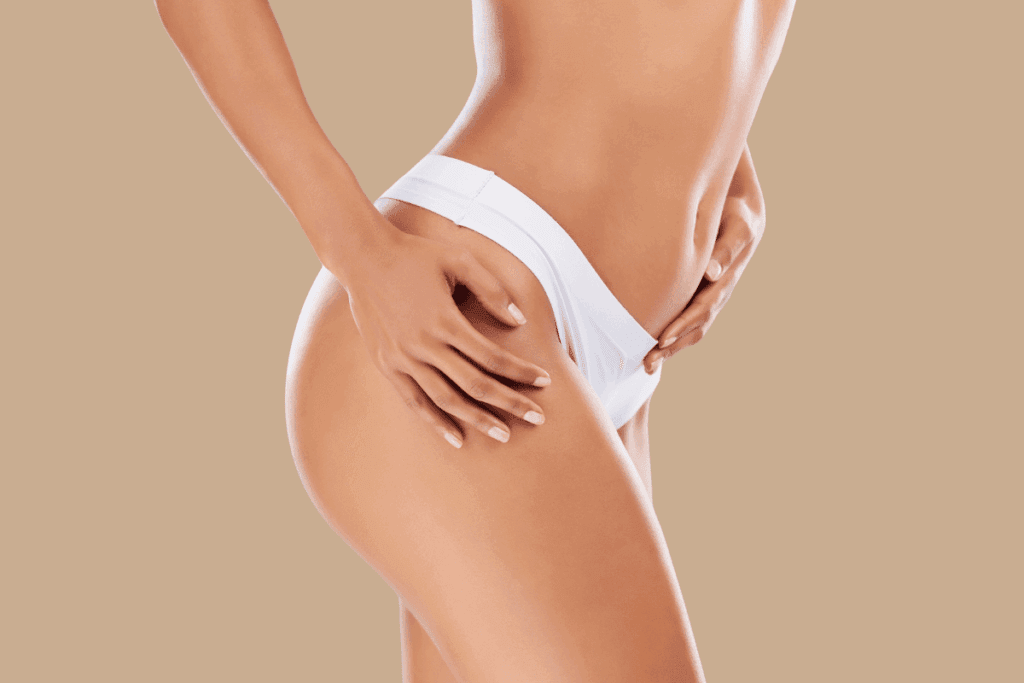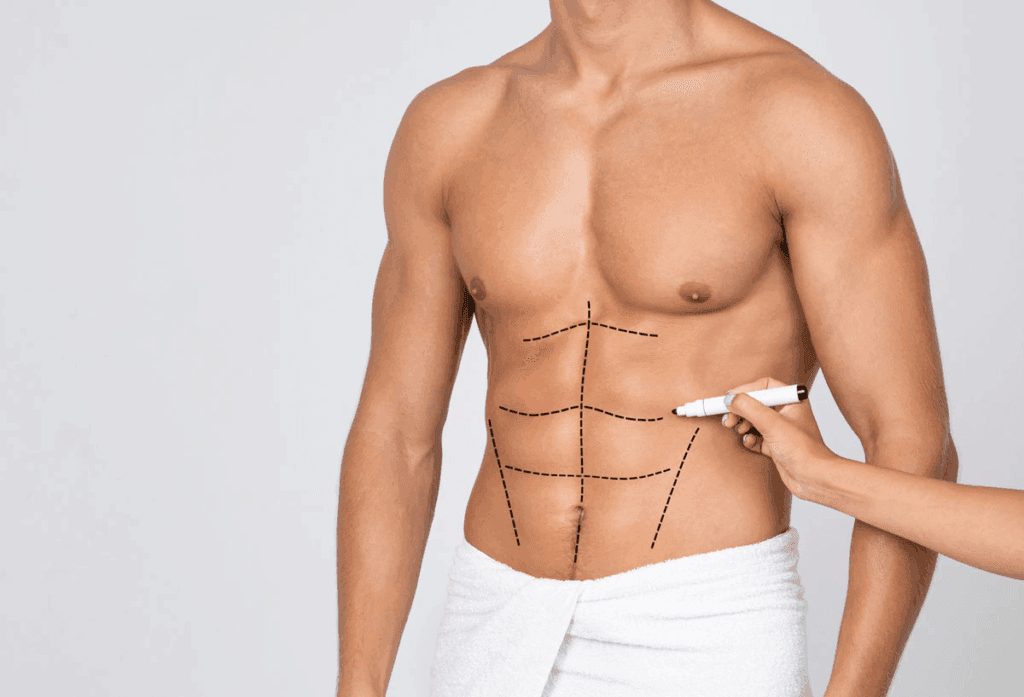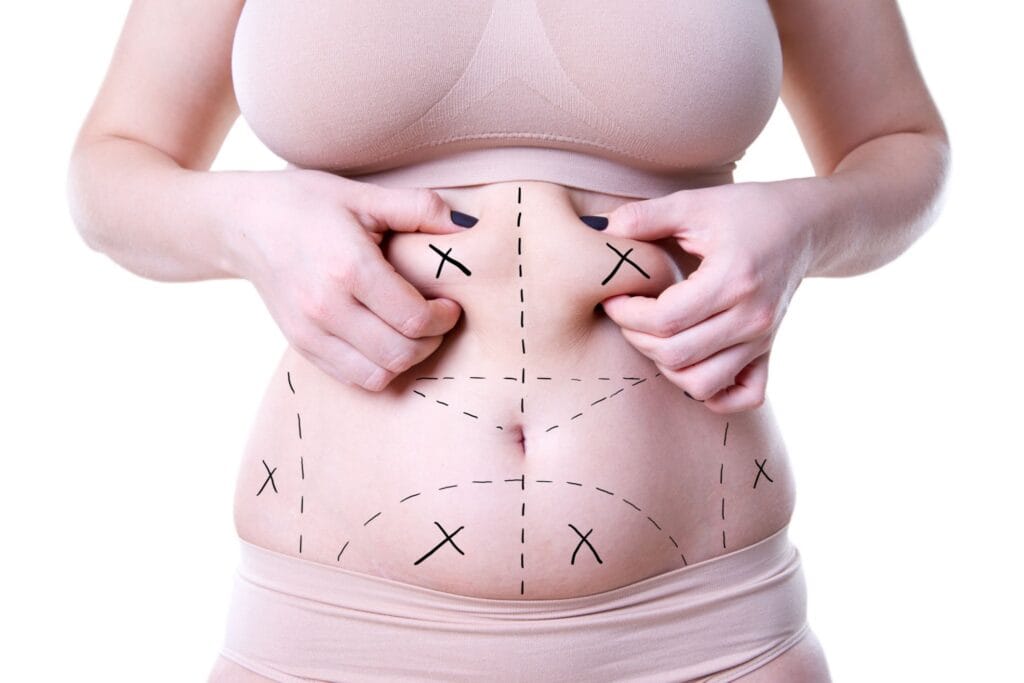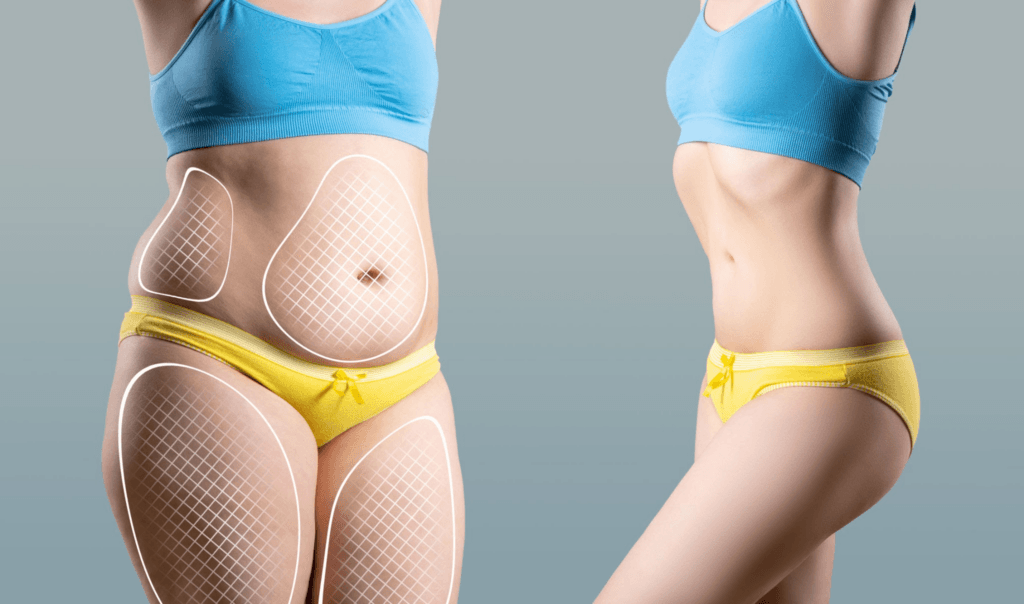Have you ever wondered why fat accumulates differently as you age or why men and women store fat in distinct areas? Subcutaneous fat, the fat layer just beneath the skin, is influenced by a variety of factors, including age, gender, hormones, and genetics. Understanding these influences can help you tailor your approach to fat loss and body contouring more effectively.
In this comprehensive guide, we will explore:
- The impact of age on subcutaneous fat distribution and accumulation.
- How gender differences affect where and how fat is stored.
- The role of hormones in fat distribution across different life stages.
- Practical strategies and insights to manage subcutaneous fat based on age and gender.
Let’s dive into the fascinating world of subcutaneous fat and discover how age and gender shape its distribution!

İçindekiler
1. The Impact of Age on Subcutaneous Fat Distribution
1.1. Subcutaneous Fat in Childhood and Adolescence
During childhood and adolescence, subcutaneous fat distribution is relatively even across the body. This fat serves as an energy reserve and plays a role in growth and development. However, hormonal changes during puberty begin to influence fat distribution, particularly between genders.
| Life Stage | Fat Distribution Characteristics |
|---|---|
| Childhood | Even distribution, essential for growth |
| Adolescence | Hormonal changes begin to influence distribution |
1.2. Subcutaneous Fat in Adulthood
In adulthood, subcutaneous fat distribution becomes more pronounced due to hormonal, genetic, and lifestyle factors. Women tend to store fat in the hips, thighs, and buttocks, while men typically accumulate fat in the abdominal area. This difference is largely due to the influence of estrogen and testosterone.
| Gender | Common Fat Distribution Areas |
|---|---|
| Women | Hips, thighs, buttocks |
| Erkekler | Abdominal area, chest, and shoulders |
1.3. Subcutaneous Fat in Middle Age
As individuals reach middle age, metabolic rate slows down, and hormonal changes, such as menopause in women and andropause in men, further influence fat distribution. Women may notice an increase in abdominal fat, while men may experience fat accumulation in the chest and waist areas.
| Gender | Fat Distribution Changes |
|---|---|
| Women | Increased abdominal fat due to menopause |
| Erkekler | Fat accumulation in chest and waist due to andropause |
1.4. Subcutaneous Fat in Older Adults
In older adults, muscle mass decreases, and fat distribution shifts further towards the abdominal area. This change is influenced by reduced physical activity, hormonal changes, and a slower metabolism. Maintaining an active lifestyle and a balanced diet becomes crucial for managing subcutaneous fat in this stage.
| Faktör | Impact on Fat Distribution |
|---|---|
| Reduced Muscle Mass | Decreased metabolism, increased fat storage |
| Hormonal Changes | Shifts fat distribution to abdominal area |
| Physical Activity | Lower activity levels contribute to fat accumulation |

2. Gender Differences in Subcutaneous Fat Distribution
2.1. Subcutaneous Fat in Women
Women generally have a higher percentage of body fat compared to men, primarily due to the influence of estrogen. This hormone promotes fat storage in the hips, thighs, and buttocks, creating a “pear-shaped” body. This fat distribution is essential for reproductive health and energy reserves during pregnancy and lactation.
| Hormone | Impact on Fat Distribution |
|---|---|
| Estrogen | Promotes fat storage in hips, thighs, and buttocks |
| Progesterone | Supports fat storage for reproductive functions |
2.2. Subcutaneous Fat in Men
Men typically store fat in the abdominal area due to the influence of testosterone, which promotes fat storage around the waist and chest. This “apple-shaped” distribution is associated with a higher risk of metabolic diseases compared to the pear-shaped distribution seen in women.
| Hormone | Impact on Fat Distribution |
|---|---|
| Testosterone | Promotes fat storage in abdominal area and chest |
| Cortisol | Increases abdominal fat storage under stress |
2.3. Hormonal Influence on Fat Distribution
Hormones play a significant role in determining where fat is stored. Estrogen in women and testosterone in men are the primary hormones influencing fat distribution. Additionally, cortisol, the stress hormone, can lead to increased fat storage in the abdominal area in both genders.
| Hormone | Gender | Impact on Fat Distribution |
|---|---|---|
| Estrogen | Women | Promotes fat storage in lower body |
| Testosterone | Erkekler | Promotes fat storage in upper body |
| Cortisol | İkisi birden | Increases abdominal fat storage |
2.4. Genetic Factors in Fat Distribution
Genetics also play a crucial role in determining fat distribution. Some individuals may be genetically predisposed to store fat in specific areas, regardless of gender. Understanding your genetic predisposition can help you tailor your diet and exercise routines more effectively.
| Faktör | Impact on Fat Distribution |
|---|---|
| Family History | Predisposes fat storage in specific areas |
| Ethnicity | Influences body shape and fat distribution patterns |
3. The Role of Hormones in Fat Distribution Across Life Stages
3.1. Puberty and Fat Distribution
During puberty, hormonal changes significantly influence fat distribution. Girls experience an increase in estrogen, leading to fat storage in the hips and thighs. Boys, on the other hand, experience a surge in testosterone, which promotes muscle development and fat storage in the abdominal area.
| Gender | Hormonal Changes | Impact on Fat Distribution |
|---|---|---|
| Girls | Increase in estrogen | Fat storage in hips and thighs |
| Boys | Surge in testosterone | Fat storage in abdominal area |
3.2. Pregnancy and Postpartum Fat Distribution
During pregnancy, women experience significant hormonal changes that lead to fat accumulation in the hips, thighs, and abdomen to support fetal development. Postpartum, many women struggle with losing this accumulated fat due to hormonal shifts and lifestyle changes.
| Stage | Hormonal Changes | Impact on Fat Distribution |
|---|---|---|
| Pregnancy | Increase in estrogen and progesterone | Fat storage in hips, thighs, and abdomen |
| Postpartum | Hormonal shifts and lifestyle changes | Challenges in losing accumulated fat |
3.3. Menopause and Fat Redistribution
During menopause, women experience a decline in estrogen levels, which leads to a redistribution of fat from the hips and thighs to the abdominal area. This shift is often accompanied by an increase in visceral fat, which poses a higher risk for metabolic diseases.
| Stage | Hormonal Changes | Impact on Fat Distribution |
|---|---|---|
| Menopause | Decline in estrogen | Fat redistribution to abdominal area |
3.4. Andropause and Fat Accumulation in Men
Andropause, often referred to as male menopause, is characterized by a gradual decline in testosterone levels. This hormonal change can lead to increased fat accumulation in the abdominal area and a decrease in muscle mass, contributing to a higher risk of metabolic diseases.
| Stage | Hormonal Changes | Impact on Fat Distribution |
|---|---|---|
| Andropause | Decline in testosterone | Increased abdominal fat and decreased muscle mass |

4. Practical Strategies to Manage Subcutaneous Fat Based on Age and Gender
4.1. Diet and Nutrition for Different Life Stages
Tailoring your diet to your life stage and gender can help manage subcutaneous fat more effectively. Here are some general guidelines:
- For women, focus on a balanced diet rich in fiber, healthy fats, and lean proteins to support hormonal balance.
- For men, emphasize protein intake and strength training to maintain muscle mass and reduce abdominal fat.
- For older adults, prioritize nutrient-dense foods and stay hydrated to support metabolism.
| Life Stage/Gender | Dietary Recommendations |
|---|---|
| Women | Balanced diet with fiber, healthy fats, and lean proteins |
| Erkekler | High protein intake and strength training |
| Older Adults | Nutrient-dense foods and hydration |
4.2. Exercise and Physical Activity
Regular physical activity is crucial for managing subcutaneous fat. Here are some exercise recommendations based on age and gender:
- For women, incorporate a mix of cardiovascular exercises and strength training to target lower body fat.
- For men, focus on high-intensity interval training (HIIT) and core exercises to reduce abdominal fat.
- For older adults, engage in low-impact exercises like walking, swimming, and resistance training to maintain muscle mass and metabolism.
| Life Stage/Gender | Exercise Recommendations |
|---|---|
| Women | Cardiovascular exercises and strength training |
| Erkekler | HIIT and core exercises |
| Older Adults | Low-impact exercises and resistance training |
4.3. Hormonal Balance and Lifestyle Changes
Maintaining hormonal balance is essential for managing subcutaneous fat. Here are some lifestyle changes to support hormonal health:
- Manage stress through mindfulness practices like meditation and yoga.
- Prioritize quality sleep to regulate hormones like cortisol and leptin.
- Stay hydrated and limit alcohol and caffeine intake.
| Lifestyle Change | Impact on Hormonal Balance |
|---|---|
| Stress Management | Reduces cortisol levels, supporting fat loss |
| Quality Sleep | Regulates hormones and metabolism |
| Hydration | Supports overall health and hormonal balance |
4.4. Medical Interventions and Professional Guidance
In some cases, medical interventions may be necessary to manage subcutaneous fat effectively. Consulting with healthcare professionals can provide personalized strategies, including:
- Hormone replacement therapy for menopause or andropause.
- Medical weight loss programs tailored to individual needs.
- Surgical or non-surgical fat reduction procedures for targeted results.
| Intervention | Benefits |
|---|---|
| Hormone Replacement Therapy | Balances hormones to support fat loss |
| Medical Weight Loss Programs | Personalized plans for effective weight management |
| Fat Reduction Procedures | Targeted removal of stubborn fat deposits |
Conclusion: Managing Subcutaneous Fat Across Life Stages
Key Takeaways
- Age and gender significantly influence the distribution and accumulation of subcutaneous fat due to hormonal, genetic, and lifestyle factors.
- Women tend to store fat in the lower body, while men accumulate fat in the abdominal area, largely due to hormonal differences.
- Tailoring diet, exercise, and lifestyle changes to your life stage and gender can help manage subcutaneous fat more effectively.
- Consulting with healthcare professionals can provide personalized strategies for hormonal balance and fat management.
Next Steps
Ready to take control of your subcutaneous fat based on your age and gender? Here’s what you can do next:
- Assess your current fat distribution patterns and identify areas of concern.
- Tailor your diet and exercise routines to your life stage and gender for optimal results.
- Implement lifestyle changes to support hormonal balance and overall health.
- Consult with healthcare professionals for personalized advice and medical interventions if needed.
- Ziyaret etmek Cerrahi ekibi to explore personalized plans and expert guidance on managing subcutaneous fat based on your unique needs.
Şu anda Cerrahi ekibi, we are dedicated to helping you achieve optimal health and body composition through personalized and innovative solutions. Contact us today to start your journey toward a healthier, more balanced you!
Sıkça Sorulan Sorular (SSS)
1. What is subcutaneous fat?
Subcutaneous fat is the layer of fat located directly beneath the skin. It serves as an energy reserve, provides insulation, and cushions muscles and bones.
2. How does age affect subcutaneous fat distribution?
As individuals age, metabolic rate slows down, and hormonal changes lead to a shift in fat distribution. Older adults often experience increased abdominal fat due to reduced muscle mass and hormonal shifts.
3. Why do women and men store fat differently?
Women and men store fat differently primarily due to hormonal influences. Estrogen in women promotes fat storage in the lower body, while testosterone in men leads to fat accumulation in the abdominal area.
4. How do hormonal changes during puberty affect fat distribution?
During puberty, hormonal changes significantly influence fat distribution. Girls experience increased fat storage in the hips and thighs due to estrogen, while boys store fat in the abdominal area due to testosterone.
5. Can genetics influence subcutaneous fat distribution?
Yes, genetics play a crucial role in determining where fat is stored. Some individuals may be genetically predisposed to store fat in specific areas, regardless of gender.
6. How does menopause affect fat distribution in women?
During menopause, the decline in estrogen levels leads to a redistribution of fat from the lower body to the abdominal area. This shift is often accompanied by an increase in visceral fat.
7. What lifestyle changes can help manage subcutaneous fat?
Lifestyle changes such as a balanced diet, regular exercise, stress management, and quality sleep can help manage subcutaneous fat effectively. Tailoring these changes to your life stage and gender can enhance results.
8. Are there medical treatments available for reducing subcutaneous fat?
Yes, medical treatments such as hormone replacement therapy, medical weight loss programs, and fat reduction procedures can help manage subcutaneous fat. Consulting with healthcare professionals can provide personalized recommendations.
Our Surgeons and Affiliated Professionals
Surgyteam olarak, her biri zengin uzmanlık ve hasta merkezli bakıma bağlılık getiren seçkin bir tıp profesyonelleri ekibiyle işbirliği yapmaktan gurur duyuyoruz.
- Dr. Mehmet Fatih Okyay (Dr. MFO): Plastik, Rekonstrüktif ve Estetik Cerrahi Uzmanı. Surgyteam'in kurucu ortağı. FEBOPRAS sertifikalı.https://www.dr-mfo.com/)
- Dr. Selçuk Yılmaz: Plastik, Rekonstrüktif ve Estetik Cerrahi Uzmanı.https://drselcukyilmaz.com)
- Dr. Ebru Okyay: Dermatoloji Uzmanı. (https://drebruokyay.com/)
- Dr. Mustafa Keleş: Estetik, Plastik ve Rekonstrüktif Cerrahi Uzmanı.https://www.medstar.com.tr/doktorlar/mustafa-keles/)
- Dr. Boray Yücel: Plastik, Rekonstrüktif ve Estetik Cerrahi Uzmanı.https://borayucel.com/)
- Dr. Sibel Atalay: Plastik, Rekonstrüktif ve Estetik Cerrahi Uzmanı. Uluslararası Sağlık Turizmi Yetki Belgesine Sahip Klinik.https://www.sibelatalay.com.tr/)
- Dr. Mert Meral: Plastik, Rekonstrüktif ve Estetik Cerrahi Uzmanı. EBOPRAS sertifikalı.https://mertmeral.com/)
Surgyteam hakkında daha fazla bilgi edinmek ve size nasıl yardımcı olabileceğimizi öğrenmek için lütfen web sitemizi ziyaret edin:
https://surgyteam.com/
Yasal Uyarı: Bu blog yazısı yalnızca bilgilendirme amaçlıdır ve tıbbi tavsiye teşkil etmez. Maliyetler tahminidir ve değişiklik gösterebilir. Kişiselleştirilmiş tavsiye ve tedavi için daima kalifiye bir sağlık uzmanına danışın.


